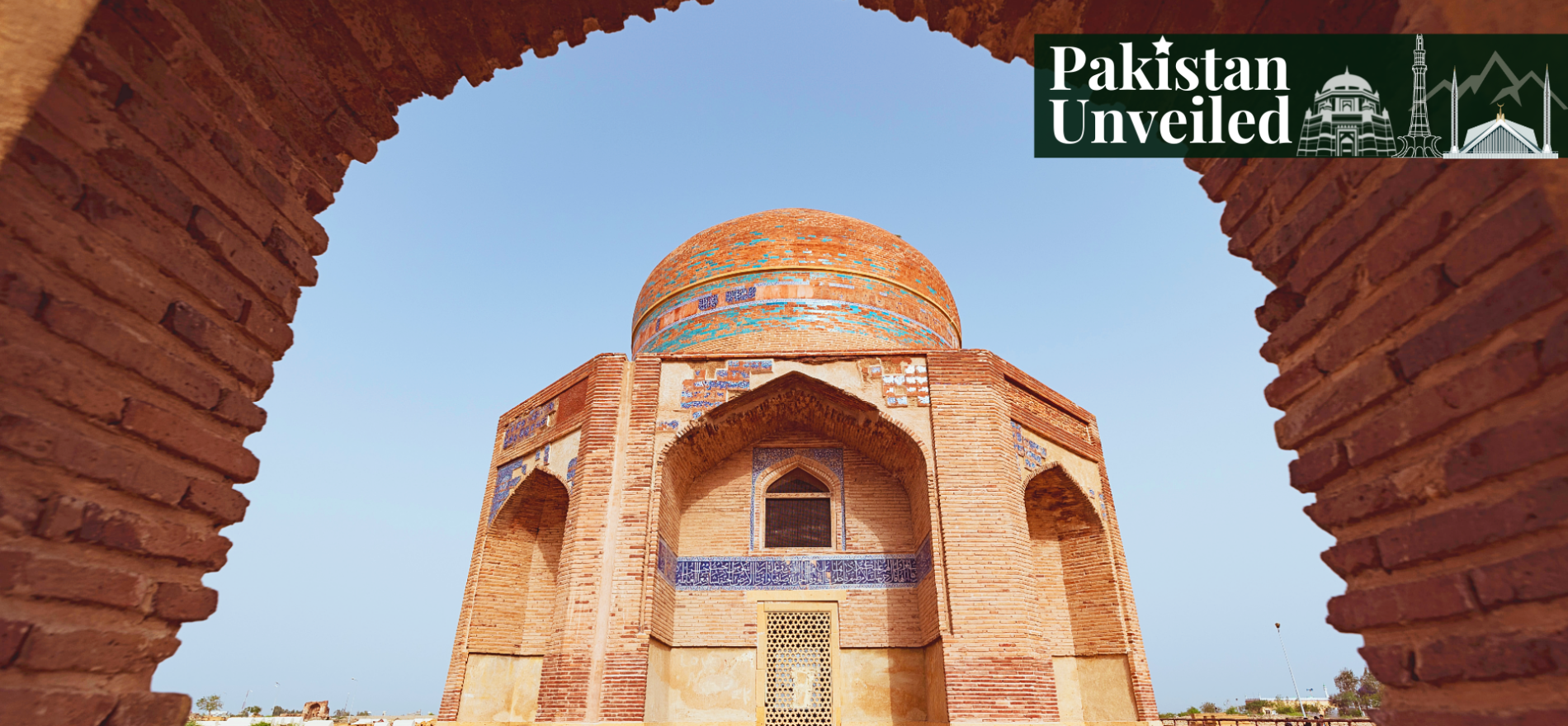Aleena Imran has an MBA from NUST and has worked as an HR professional at companies like MPCL, Coke, Jazz, and LMKT. In her spare time, she runs her home-based baking business. Apart from being an avid reader, she enjoys writing, photography, and art.
When you hear the word necropolis or funerary, you would think of dark, gloomy, and maybe even haunted. The Makli graveyard is quite potentially the opposite.
Located at a distance of around 98 kilometers from Karachi (the current capital of Sindh), and 6 kilometers from Thatta (the medieval capital of Sindh), the diamond-shaped necropolis is spread out over 10 kilometers and has approximately 500,000 to 1 million tombs.
The tombs were built over 400 years, between the 14th and 18th centuries. The stories behind the name Makli would pique anyone’s interest. According to the Maklinamah (“Tale of Makli”) by Mir Sher ʿAli Qani Tattawi (an eighteenth-century Sindhi intellectual), a Hajj pilgrim stopped at the site on his way to the Ka’aba.
Overwhelmed by the sheer sacredness of the site, he experienced a moment of divine ecstasy and proclaimed “Hadha Makkah Li” (This is Makkah for me!) – a phrase that was later shortened to Makli. Another story is that Mai Makli (r.a.), a deeply spiritual woman prayed to God to stop Sultan Firuz Shah Tughlaq from militarily conquering the city of Thatta – and her prayers were answered.
It is also said that Mai Makli used to make lassi (a yogurt-based drink) using the milk from her goats, and take it to Makkah (Saudi Arabia) every night – where Sindhi Hajj pilgrims saw her distributing it.

It is said that the site was originally a khanqa established by Sufi saint Sheikh Hamad Jamali (r.a.) who was later buried there. In veneration, the ruler Jam Tamachi and other devotees requested to be buried there as well – and thus Makli was established as a graveyard.
As per records, the distinguished Sufi saints buried in Makli – apart from Mai Makli (r.a.) and Shaikh Hammad Jamali (r.a.) – are Abdullah Shah Sahabi (r.a.), Shah Murad Shah Sherazi (r.a.), and Makhdoom Mohammad Hashim Thatvi (r.a.).
Many remain unaware of the historical significance of the UNESCO World Heritage Site to this day. With tombs of over 125,000 Sufi saints, several rulers, and innumerable other individuals of varying significance, the site is an amalgamation of different cultures, religions, timelines, and civilizations.
Frequented by devout Muslims and Hindus alike, the site offers a unique glimpse into the lost magnificence of the region. Whilst traveling through the cemetery through the extensive road network, one experiences four historical periods through the different architectures: the Samma Dynasty (1340-1520 AD), the Arghun Dynasty (1520-1555 AD), the Tarkhan Dynasty (1555-1592 AD), and the Mughal dynasty (1592-1739 AD).

The Makli graveyard hosts six different kinds of monuments, that is, tombs, khanqas (Sufi learning spaces), mosques, canopies, enclosures, and graves.
A wide variety of elaborate Islamic calligraphy, Jainist designs, statues, minarets, and complex blue tile work make the monuments a fascinating window to the middle and far-eastern artistry – since the masonry is a mix of Muslim, Mughal, Persian, Hindu, and Gujarati styles.
The most decorated monuments (the ones usually showcased in photographs around the world) are the tombs of Jam Nizamuddin II (ruled 1461-1509), Jan Baba and his son Isa Khan Tarkhan, Diwan Shurfa Khan, Baqi Beg Uzbek, and Prince Sultan Isa Ibn Mirza.

While the 21 active Sufi shrines make Makli an important spiritual site for devotees, the cemetery is also visited by countless local and foreign tourists, historians, heritage lovers, and archeologists. Despite the harsh elements that are contributing to the slow restoration process, authorities are working towards preserving the historical landscape.
Given Pakistan’s renewed focus on increasing tourism, the future of Makli’s restoration seems promising. For anyone in Pakistan – or planning to visit – the Makli graveyard is a must-visit. The site is truly a sight to behold.
If you want to submit your articles and/or research papers, please check the Submissions page.
The views and opinions expressed in this article/paper are the author’s own and do not necessarily reflect the editorial position of Paradigm Shift.



















